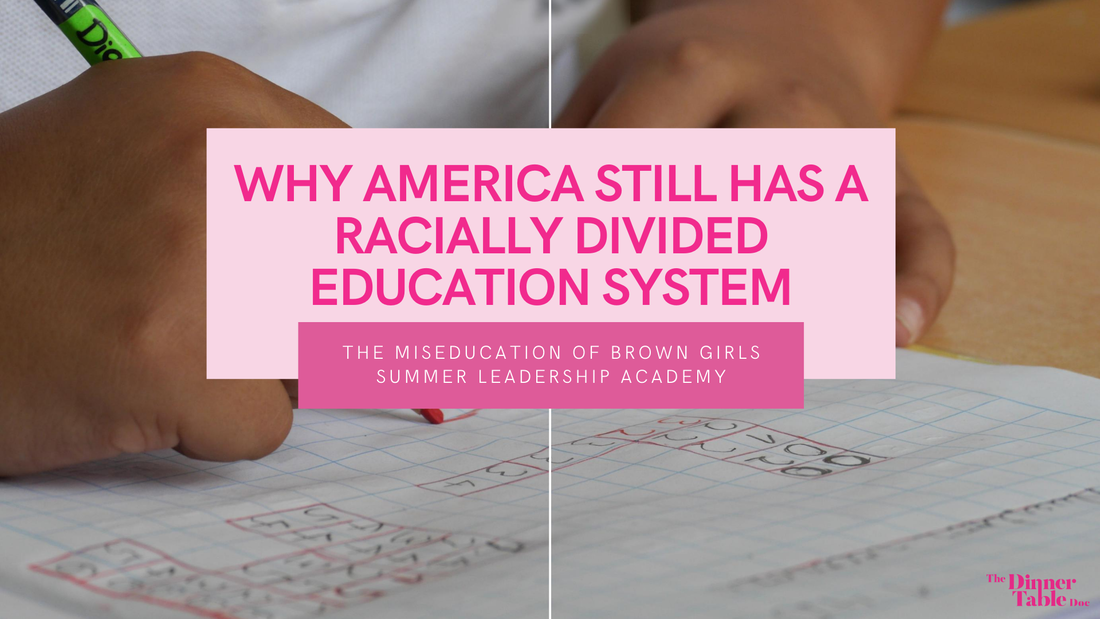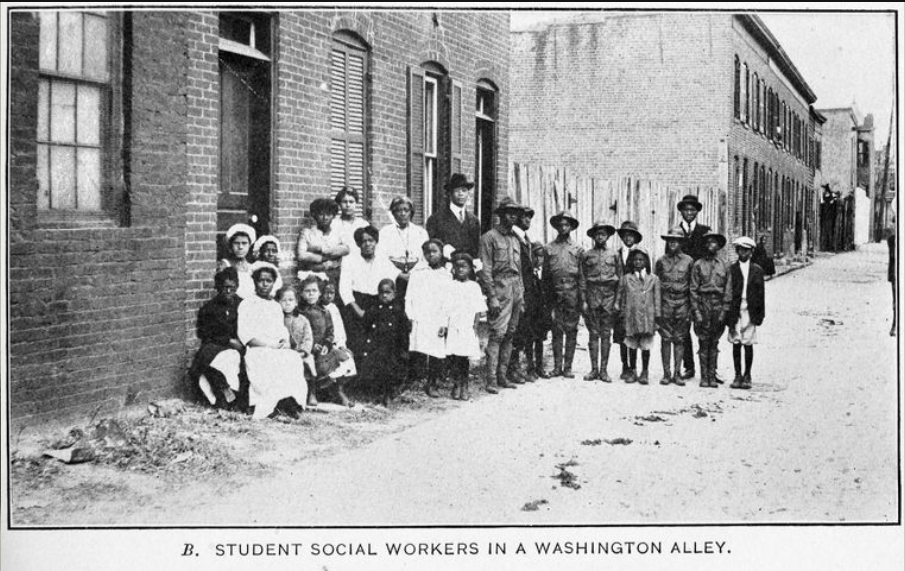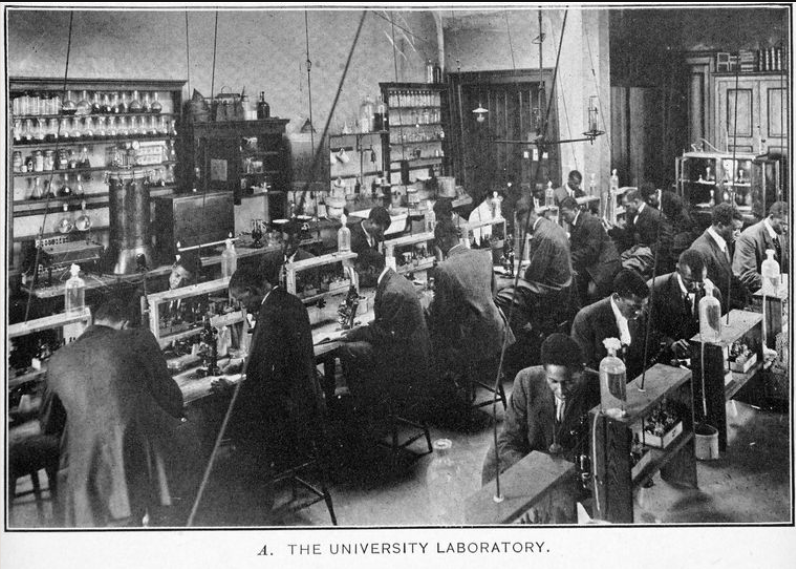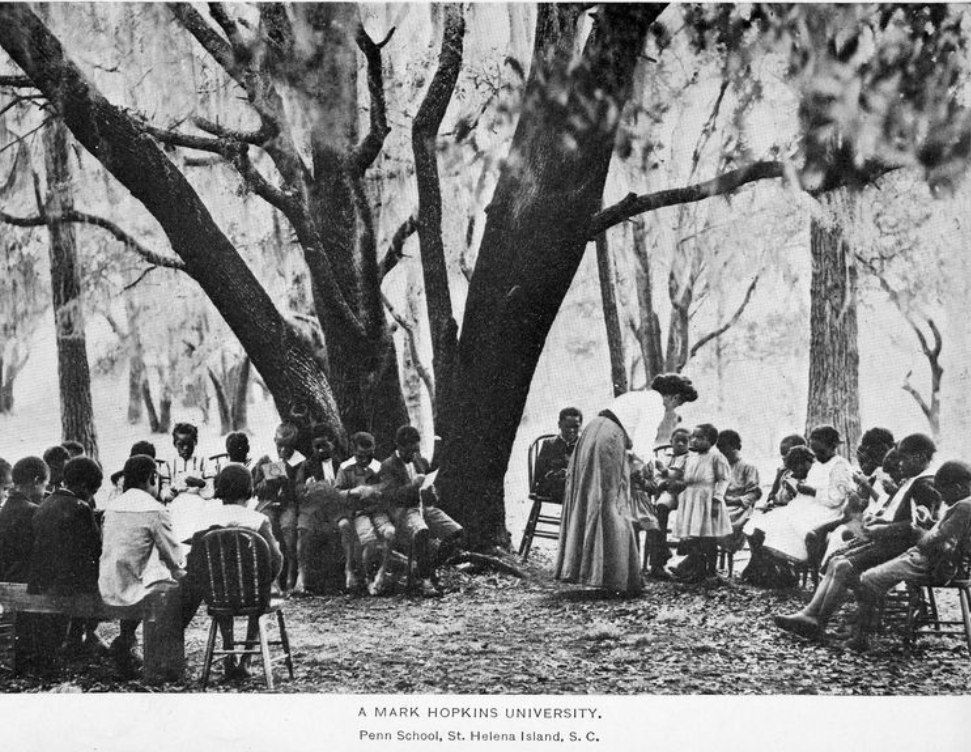|
The foundations of the American education system are quite humble; more religious, less complicated, but still divided. The colonies were not united, and neither was education. Pre-Revolution each colony, depending on the economy, population density, and religious behavior educated their children differently. The divides that remained the same despite geographical differences was class; poorer, rural children remained uneducated, as did women, Native Peoples, and slaves. In New England public education was common. Predominantly Puritain, northern and middle colonies educated their children with heavy religious overtones; young boys were taught to read and write using the Bible, and colleges were mainly to educate the clergy. Southern colonies did not offer many education opportunities because most who had children couldn’t afford to pay for private tutors, as they were indentured servants, and the physical distance between people made it difficult to gather students in school houses. The racial disparities in American education started in the practice of slavery. To keep the slave population from revolting, laws were passed to keep slaves uneducated. Whites could not teach slaves to read or write. The penalties for slaves included physical mutilation (hands and feet cut off, eyes gouged out, etc.) or death. For whites imprisonment, fines, or whipping was the punishment for teaching slaves to read. Even after American independence was won, reforms to the nation were still just over 100 years away. After the Civil War reforms were on the table, and the same women arguing for the women’s right to vote were arguing for education reforms. Horace Mann, best known as the Father of the Common School, was one of the greatest advocates for education reforms. He advocated for the use of local property taxes for the financing of public schools, introducing the age-grading system, and the ‘look-and-say’ method. This is where the foundations of our modern day education system take shape. Child labor laws were passed to give children greater access to education and prevent juvenile delinquency. White children in the north (of all backgrounds) were given the opportunity to escape manual labor and unsafe conditions in factories. Because Reconstruction was essentially a failure, there was only a brief period of reprieve for former slaves before things worsened. In 1862 and 1890, the Morrill Land-Grant College Act gave federal land to states in order for said states to establish colleges and many HBCUs were founded under the Morrill Act of 1890. Trade school was also an option for blacks who wanted to escape poverty, and a portion of black men entered fields like carpentry, construction, and engineering. However, education opportunities for blacks and whites were still vastly different. Black children either couldn’t go to school at all like their southern poor white counterparts because they had to do manual labor with their families, or didn’t go to school because it wasn’t safe due to the threats racists whites imposed upon them. To be clear, black children were not wholly uneducated; many former slaves learned to read, and being educated was a source of pride for those who did. The education gap widened further due to Black Codes being introduced and the beginning of the Jim Crow Era. America developed a War Industrial Complex economy in response to the economic stresses of WWII and the Cold War; this essentially means that an incredibly large portion of America’s national budget began to go to military spending, defence spending, and weapons manufacturing. In 1950, America became the world’s largest exporter of arms and entered into a Cold War with Russia; a nuclear arms race ensued. The start of the Cold War moved American education further in the direction of being a direct syphon off into national defence. There was an increased demand for workers to go into fields that related to technology, engineering, sciences like chemistry and nuclear physics, and economics. To keep up with this demand, American schools reacted and shifted their educational goals to reflect the government's needs. Educational changes came in multiple forms during the 1950’s. First was Brown v. Board of Education in 1954, which ruled ‘separate but equal’ unconstitutional but did not outline integration policies. The launch of Sputnik in 1957 kicked off the space race, and influenced Congress to pass the NDEA (National Defence Education Act) which pushed America’s curriculum to double down on maths and sciences. While the influence of the federal government on individual states curriculum is fairly low, the NDEA and the social changes of the 1950’s in response to the rising Civil Rights movement caused the big fed to move in on education. Then in the 1960’s John F. Kennedy was elected to the presidency and made significant moves to use education as a springboard for the economy. Kennedy, in speaking to Congress, laid a plan to decrease high school drop-out rates and give teachers increased training in content fields, specifically math and science (for this he partnered with the National Science Foundation and the Office of Education). Kennedy also introduced the space program, Gemini, sending us into space and to the moon. J.F.K did quite a lot for education, but while America was attempting to outrun Russians in defence technology, America was also forgetting about its black students, about its black people. America’s infatuation with the space race demanded that education and schools modernize. New scientific discoveries were taking place rapidly; new mathematical material was coming down the tubes rapid fire. Schools adopted new material in turn, and continued to get new fastenings; new text books, new teaching material, new experiment technology. But the places that were underfunded- or poor black and brown communities got left behind because they didn’t have the funding nor the man-power to update. Schools in poor black communities suffered high drop-out rates and high closure rates. And despite the federal government’s best efforts under Kennedy and Johnson, white schools did not successfully integrate because of white-flight; once predominately white schools were filled with black and brown students, and in response white families swept up their children into the suburbs and with them went school district funding. When busing was introduced, white-flight widened the educational gap between black and white students again. Then again in the 1980’s and 1990’s. Because those school districts went underfunded, they couldn’t keep up with things like individual student counseling, school feeding programs, and student resources (libraries, laboratories, text books, new desks, etc.) so they also faced high in-school crime rates, increased gang violence/membership, and understaffing. Black students got left behind; white America went to the moon, and black kids went to jail.
Black students were forced to go to schools with little to no funding, supplies, or staffing. Black students were targeted by white mobs for wanting to be educated. Despite those laws paving the way for some change all those laws didn’t really change much about education equality because they didn't get to the root of the problem; America’s refusal to acknowledge its racist past in order to move forward. Black people still live in ghettos and poor neighborhoods in which their school districts are underfunded. Black children still end up going to predominantly white schools, where they get harassed, bullied, and mistreated for their skin color and culture. College aged black children don’t receive fair treatment when it comes to the application process. All because there is a staunch denial of the fact that racism still exists in more subtle forms than before. This continues while there are significant changes occurring in our nation's education system because of COVID-19. This continues while there is a war still being waged on black bodies and minds. The racial divide in education developed because America has always been classist. Before black and brown children were thrown into the mix, it was poor white and poor immigrant children who were not afforded educational opportunities. Because this country insisted on keeping class divides, black people became the target for hatred as we were poor and disenfranchised by the system of oppression fostered by classist divides. To keep blacks on their knees and out of sight, America has tried everything to keep blacks poor and uneducated; especially because education is packaged as a ticket to the so-called “American Dream.” American innovation has left black people behind because we were never supposed to be on the roster. So, what can we do?
Written by: Maya S. La CroixMaya S. La Croix is a rising high school senior who participated in our Set The Table Cohort led by Feyth Scott during The Miseducation of Brown Girls Summer Leadership Academy.
17 Comments
Roberta Jones
8/4/2020 10:43:00 am
Amazing scholarship. Thank you Maya.
Reply
Maya La Croix
8/4/2020 11:15:21 am
Thank you Ms. Roberta.
Reply
Jeanne Hammock
8/5/2020 05:15:44 am
I loved this Maya, but I feel like this is just the beginning for you. You have just seated us at your table. I’m looking for the appetizer ,your next piece.
Reply
Jade
8/4/2020 11:23:17 am
Excellent, Maya!
Reply
Rasheedah
8/4/2020 11:56:24 am
Maya- this was an amazing piece of work!!!
Reply
Luis
8/4/2020 03:00:18 pm
Thank you Maya for the great knowledge you share!!!
Reply
Ruth Sistaire
8/5/2020 04:29:48 am
Truly an excellent article Maya! Kudos!
Reply
Darlene Roots-Douglas
8/5/2020 05:25:27 am
Maya, I am so proud of you! This an extraordinary piece of work.
Reply
Bert
8/5/2020 01:26:57 pm
Maya, excellent work...absolutely on point and timely!!!
Reply
Ahmasi
8/7/2020 01:34:52 am
Excellent "A" material! Keep honing and refining your literary skills! You've got the gift!
Reply
N. Maratos
8/7/2020 01:44:01 pm
A very informative, powerfully written editorial!!
Reply
Rob Prince
8/15/2020 06:32:10 am
Well done. Keep going!
Reply
Sam Selolwane
8/15/2020 08:06:54 am
Great work Maya. I am very proud of you. This was a refreshing read from a future leader. Thank you for sharing.
Reply
Geo Bivins
8/17/2020 05:51:43 pm
great job.
Reply
Cuyjet Associates
10/23/2020 10:01:20 am
Excellent article kept me engaged from beginning to end., Your scholarly article is really impressive. Very proud of your work.
Reply
Kendra
3/20/2021 04:33:59 pm
Such an interesting read! Very well done Maya. Full of talent and very inspiring. Looking forward to more for sure.
Reply
Frederick Gonzalez
1/11/2022 04:35:28 am
As a teacher of adult education, I would love to share this with my class. What an insightful piece of writing. Write on Maya!
Reply
Leave a Reply. |
Archives
May 2022
|






 RSS Feed
RSS Feed